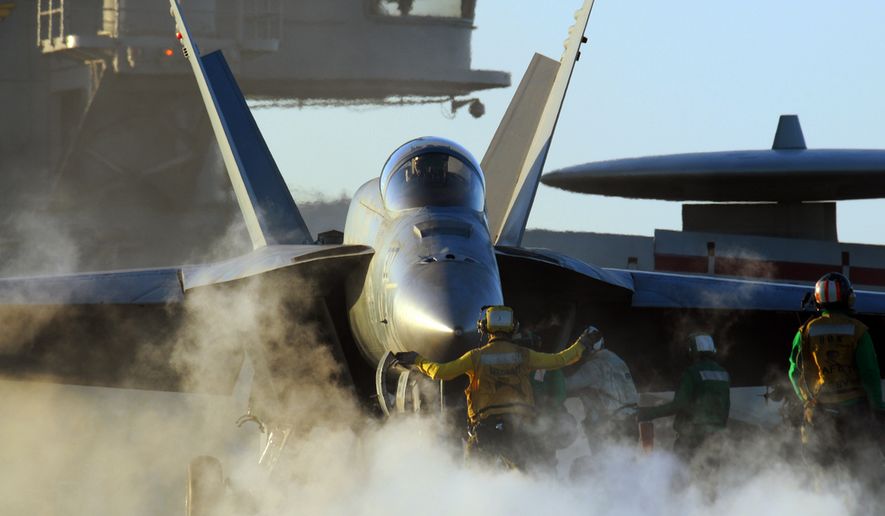The Navy says it is prepared to push back against an increasingly bellicose China even during day-to-day operations short of full-scale war.
The Navy, Marine Corps and Coast Guard on Thursday released “Advantage at Sea,” their maritime strategy for how the nation’s sea services will prevail during crisis and conflict over the next decade. While the strategy acknowledges other national rivals such as Iran and North Korea, it places particular focus on China, and to a lesser extent Russia, over their “maritime aggressiveness” and clear intent to remake the international order in their favor.
“China is the only rival with the combined economic and military potential to present a long-term, comprehensive challenge to the United States,” the report states.
China’s malign behavior, the report states, places the country on a direct trajectory to challenge the ability of the United States to preserve freedom of the seas, deter aggression and win wars.
“We are at an inflection point,” the report states. “Our actions in this decade will shape the maritime balance of power for the rest of this century.”
China already commands the world’s largest naval force — including submarines, aircraft carriers and amphibious assault ships — and is continuing to build warships at a pace the authors called “alarming.”
“China’s navy battle force has more than tripled in size in only two decades,” they wrote.
While the U.S. military fleet is dispersed throughout the global, China’s numerically larger forces are concentrated in the Western Pacific. But with initiatives such as their “One Belt One Road” program, China is seeking to spread its influence farther from its shores than ever before.
“As sailors, we are on the leading edge of ’Great Power Competition’ each and every day,” said Adm. Mike Gilday, Chief of Naval Operations. “Sea control, power projection and the capability to dominate the oceans must be our primary focus. Our forces must be ready today and ready tomorrow to defend our nation’s interests against potential adversaries at any time.”
As part of its strategy, the Navy says that deterring Chinese incrementalism requires firm operations to confront the country’s malign behavior.
“Ready, forward deployed naval forces will accept calculated tactical risks and adopt a more assertive posture in our day-to-day operations,” the strategy report says. “Naval service operations and force posture will focus on countering (Chinese) malign behavior globally and strengthening regional deterrence in the Indo-Pacific region.”
China’s and Russia’s aggressive naval growth and modernization are eroding U.S. military advantages. To counter that bleak prediction, a future Navy fleet will combine legacy assets with new, smaller ships, modernized aircraft and both manned and unmanned platforms, the report states.
In his preface to the report, Secretary of the Navy Kenneth J. Braithwaite wrote that the rules-based international order is once again under assault.
“We must prepare as a unified naval service to ensure that we are equal to the challenge,” Mr. Braithwaite wrote.
• Mike Glenn can be reached at mglenn@washingtontimes.com.




Please read our comment policy before commenting.